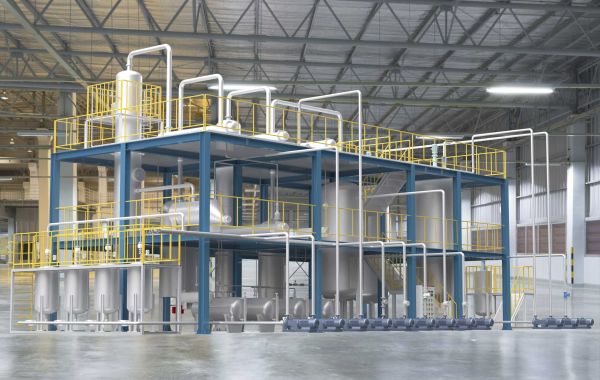In the pursuit of sustainable and efficient solutions for waste oil treatment, membrane distillation has emerged as a crucial technology in the regeneration of base oil from waste oil.
Waste oil poses a significant environmental challenge, but through the process of regenerating base oil, valuable resources can be recovered. Membrane distillation plays a vital role in this process by offering several distinct advantages.
The principle of membrane distillation in this context is similar to its general application. A hydrophobic membrane is utilized to separate components based on vapor pressure differences. In the case of waste oil regeneration, the heated waste oil is brought into contact with one side of the membrane. As the temperature of the waste oil is elevated, volatile components evaporate. The cold permeate side, maintained at a lower temperature, causes the vapor to condense, selectively separating the desired components for base oil regeneration.
One of the key benefits of membrane distillation in this process is its ability to handle complex mixtures found in waste oil. It can effectively remove impurities and contaminants, leaving behind a purified base oil. This not only reduces environmental pollution but also provides a valuable source of reusable base oil.
Moreover, membrane distillation operates at relatively low temperatures compared to traditional distillation methods. This leads to significant energy savings and makes the process more economically viable. Additionally, the membrane's hydrophobic nature prevents the passage of water and other non-volatile substances, ensuring a high-quality regenerated base oil.
The performance of membrane distillation in waste oil regeneration is influenced by various factors. Membrane properties such as porosity, hydrophobicity, and thermal stability are crucial. Optimal operating conditions, including temperature differentials, flow rates, and pressure settings, need to be carefully determined to maximize the efficiency and productivity of the process.
As research and development in this field continue, advancements in membrane materials and process optimization are expected. This will further enhance the effectiveness and reliability of membrane distillation in regenerating base oil from waste oil, contributing to a more sustainable future.
In conclusion, membrane distillation offers a promising approach to the regeneration of base oil from waste oil. With its unique advantages and potential for continuous improvement, it holds great promise in addressing the environmental and economic challenges associated with waste oil disposal.







